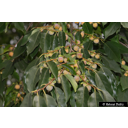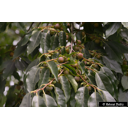Wissenswertes zu diesem Pflanzenindivuduum
Diospyros lotus L. 1753
Ebenaceae
- Ebenholzgewächse (APG IV)Lotuspflaume
Akzessionnummer: EG-C-040-20493
Pflanzjahr: 2010
Patenschaftstext: Katharina Goodwin zum 70. Geburtstag
Taxonkonzept: The Plant List (2014), version 1.1
Verbreitung: Türkei, Korea, China; eingebürgert in Europa: Balkanhalbinsel
Größe: 0 (m)Blütezeit: V - VI
Diospyros lotus L. - Accepted: Diospyros lotus L. bei Zander 2008; Familie: Ebenaceae (Zander 2008)Diospyros lotus L. - Accepted: Diospyros lotus L. bei The Plant List (2010); Familie: Ebenaceae (APG III)Diospyros lotus L. - Accepted: Diospyros lotus L. bei The Plant List (2014), version 1.1; Familie: Ebenaceae (APG III)Diospyros lotus L. - Accepted: Diospyros lotus L. bei The Plant List (2010); Familie: Ebenaceae (APG IV)
Haider, M. et al. (2005): Wildbienenkataster. See: https://www.wildbienen-kataster.de; Ministerium für Ernährung, Landwirtschaft, Umwelt und Forsten, Baden-Württemberg (Hrsg.) (1985): Pflanzenkatalog zur Verbesserung der Bienenweide und des Artenreichtums (Kurztitel: Bienenweidekatalog); The International Plant Names Index (2009). Published on the Internet http://www.ipni.org; Courtesy to IPNI, 2009. Exported from IPNI at date: 2009-09-22 20:17:51; Westrich, P. et al. (2018): Die Wildbienen Deutschlands.. Ulmer Verlag ISBN 978-8186-0123-2.;
Diese Webseite verwendet Google Maps, um Karten und Standorte von Pflanzen in den Hohenheimer Gärten anzuzeigen. Dadurch werden unter Umständen Daten an Google weitergeleitet, was mit einer Verarbeitung Ihrer personenbezogenen Daten verbunden sein kann. Die Datenschutzerklärung von Google finden Sie hier: Datenschutzerklärung von Google



